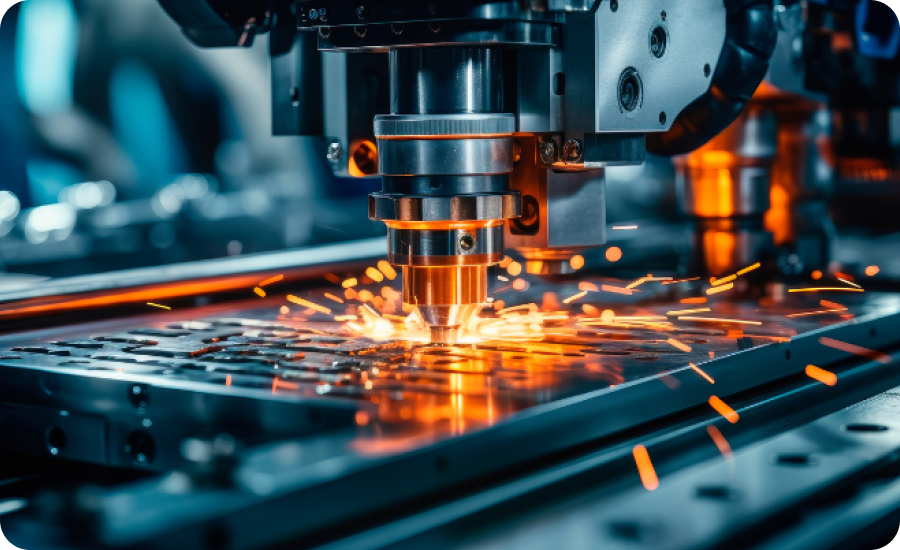The MedTech industry’s success relies heavily on sustainable manufacturing practices aimed at achieving the goal of medical device evolution.
While the core values that OEMs (Original Equipment Manufacturers) look for in a design, development, and manufacturing partner remain timeless, new best practices and advanced technologies have emerged. This has left some in doubt about what makes a truly sustainable manufacturing operation. In our experience, focusing on manufacturing best practices is crucial to producing high-quality, end-user focused products that are ready for market adoption.
Here are the top five areas of focus that should be on your list for creating a sustainable manufacturing operation that can grow with your products demands:
Manufacturing operations that are focused on product quality.
Quality and FDA compliance is critical to any MedTech manufacturing operation. In the healthcare setting, ensuring that the product meets all the requirements and specifications for end-users is crucial.
With that, manufacturing operations that focus on quality can benefit from increased efficiency, lower production costs, and reduce waste. Additionally, when products are of high quality, they are less likely to fail market adoption, which can improve the bottom line of a manufacturing operation.
Keeping the end-user in mind throughout product design, development, and manufacturing.
When it comes to MedTech products, the end-users are the ones who will be directly impacted by the product. It’s important for manufacturers to prioritize the needs and preferences of these users to create products that are compatible with existing clinical infrastructure and can reduce risks.
This ensures that the products are not only safe, but also effective in real-world settings. By keeping the end-users in mind during the design process, manufacturers can create products that truly make a difference in the lives of those who use them. This creates an effortless, more sustainable operation for not only the manufacturing operation, but the continuous improvement efforts as well.
Tip: The end-user referenced isn’t always the health care provider (HCP) or the patient. In some cases, the end-user is a care giver, or even a family member, that isn’t trained like the HCP or patient would be. It’s best to keep this in mind and adapt your devices to meet these new needs.
Embracing lean manufacturing with modern technologies.
In today’s fast-paced world, staying up to date with the latest technology is crucial for businesses to remain competitive and successful. One area where modern technology can make a significant impact is in reducing the time it takes to bring products to market.
Our extensive experience in the manufacturing space has shown us the impact that evolution has had on the marketplace. Our team has embraced these changes to meet the progressing needs of our clients— growing beyond manufacturing, we expanded our capabilities to become a commercialization platform.
By utilizing various tools such as progressive stamping, robotic welding and quick turn cells, manufacturers can streamline their operations and accelerate the development process.
Improving performance in technology could increase profits for manufacturers by up to 20%, as supply chain costs make up 40% of expenses in the medical devices market today.
This not only helps to save time and money but also ensures that the final product meets the highest quality standards and is ready for market adoption quicker. With that, lean operations that are focused on efficiency, also have a lower chance of not passing quality inspections and are in a better position to evolve with time.
Bridging the gap between education and industry.
To succeed in the MedTech industry, it’s crucial to expand education to align with new industry standards and technologies. This gap has been noticed for years and needs to be addressed for companies to have the necessary knowledge and skills to keep up with the ever-changing landscape.
According to Statista, by 2026, the manufacturing industry in the U.S. is projected to have about 12.16 million employees. However, the manufacturing skills gap in the U.S. could result in 2.1 million unfilled jobs by 2030.
By offering education and training programs focusing on the latest advancements and technologies, you can stay ahead of the curve and provide a more sustainable, and more advanced operation offering. It’s important that when you embrace technology advancements and lean manufacturing, that you also embrace the new skillsets that need to be developed with these tools.
Prioritizing a partner with time to market efficiency.
Working with a single, onshore manufacturing partner from start to finish offers many opportunities to create a sustainable operation that can grow with your demand. At the end of the day, end-users want innovative devices, and they want them now!
One commercialization platform eliminates the need for your product to travel long distances, which can save time and reduce shipping costs. Additionally, by limiting the number of hand-offs between each phase of the product life cycle, you can minimize production errors and ensure a higher level of quality control.
Another thing that can lead to a quicker time to market is working with a commercialization partner that offers 3PL shipping and kanban storing. By removing the need for a logistics partner, OEMs can focus on what they do best— creating life-enhancing technology. By having your manufacturer manage logistics, while keeping inventory fully accessible, you also eliminate another hand-off point where delays can occur.
Overall, building a sustainable manufacturing operation requires a focus on quality, embracing new technologies, prioritizing the needs of end-users, bridging the education and industry skills gap, and streamlining the time to market efficiency. By keeping these areas of focus in mind, manufacturers can create high-quality, end-user focused products that are ready for market adoption.
